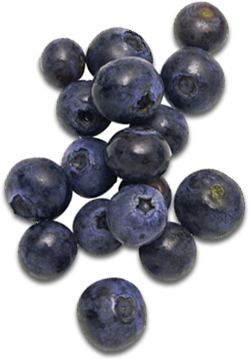no items to display
A Simple Way to Get Fruits and Vegetables to Those Who Need Them Most
Imagine never having tasted a cucumber before. That was what struck me the most when I read this New York Times blog post about The Fruit and Vegetable Prescription Program, or FVRx: Some people don’t know the simple joy of eating fresh produce. The innovative prescription program, which serves 1,200 low-income families through four hospitals in New York City, is designed to increase the consumption of fresh fruits and vegetables among low-income overweight children and their families. One child enrolled in the program reported, “I tried a cucumber today, and it’s good, actually.”
Lack of fresh fruits and vegetables in low-income areas of the country is a real problem. Even when folks want to eat better, many find it hard to do, either because they simply do not have access to fresh produce or because they can’t afford it. These areas, which occur in urban neighborhoods and rural towns, are termed “food deserts.”
According to the USDA, “Instead of supermarkets and grocery stores, these communities may have no food access or are served only by fast food restaurants and convenience stores that offer few healthy, affordable food options. The lack of access contributes to a poor diet and can lead to higher levels of obesity and other diet-related diseases, such as diabetes and heart disease.”[1]
FVRx was instituted by Wholesome Wave, a non-profit that advocates for access to healthy food in low-income neighborhoods. Participants in the program meet monthly with a doctor or nutritionist, but instead of being told to lose weight and then sent on their way (the traditional, doomed-to-failure approach), they receive nutritional information, recipes, and most importantly, vouchers — or Health Bucks — redeemable for fruits and vegetables at local farmers’ markets. The vouchers double the amount of produce these families can purchase with food stamps. (Farmers are reimbursed for the full value of their fruits and vegetables by non-profits and grants.)
“The goal is to level the playing field between artificially cheap unhealthy stuff and the healthy foods wealthier people enjoy,” according to Micel Nischan, founder of Wholesome Wave.
What I love about this simple program is that it works. Check out these numbers:
· An astounding 97 percent of the children and 96 percent of their family members ate more fruits and vegetables after joining.
· More than 90 of the families shopped at farmers’ markets either weekly or more than two or three times a month.
· 70 percent of participants had more knowledge about the importance of fruits and vegetables.
· After only four months, 40 percent of child participants had reduced their BMI, or body mass index.
The Fruit and Vegetable Prescription Program benefits farmers at participating markets, too. In fact, they’ve seen their incomes rise by nearly 37 percent. There’s even been a ripple effect among local stores, which are now carrying more affordable produce in order to compete with the farmers’ markets. This is important, because farmers’ markets aren’t usually open year round. It also shows that people who live in food deserts really do want healthy food and can change the retail environment when they make that known.
More good news: similar programs are underway in community health centers in thirty states. I really hope we’re seeing the beginning of a movement here for equal access to health-giving foods like fruits and vegetables.
Of course, everyone — not just those living in food deserts — can benefit from eating more fresh fruits and vegetables. It can be especially difficult to make sure you’re eating well during the holiday season, between all the parties and the home-baked treats, but maintaining a balanced diet will make the holidays happier for everyone. As always, Juice Plus+ can help bridge the gap between what you should eat and what you do eat.
If you or anyone you know would like to start a child on Juice Plus+ but have concerns about cost, you should know that children who participate in the Children’s Health Study receive Juice Plus+ free of cost. You can find details on how to enroll your child here.
References:
[1] http://apps.ams.usda.gov/fooddeserts/fooddeserts.aspx






